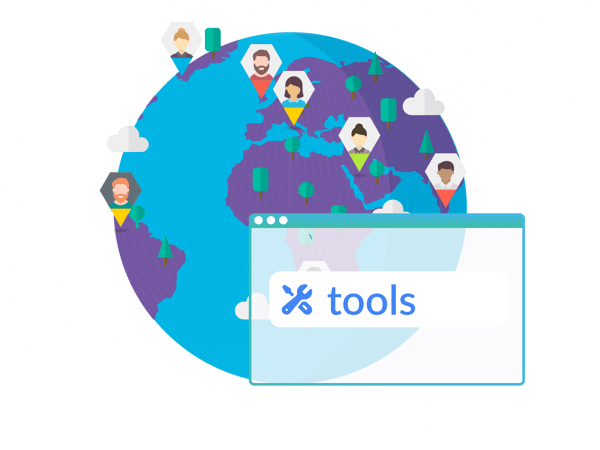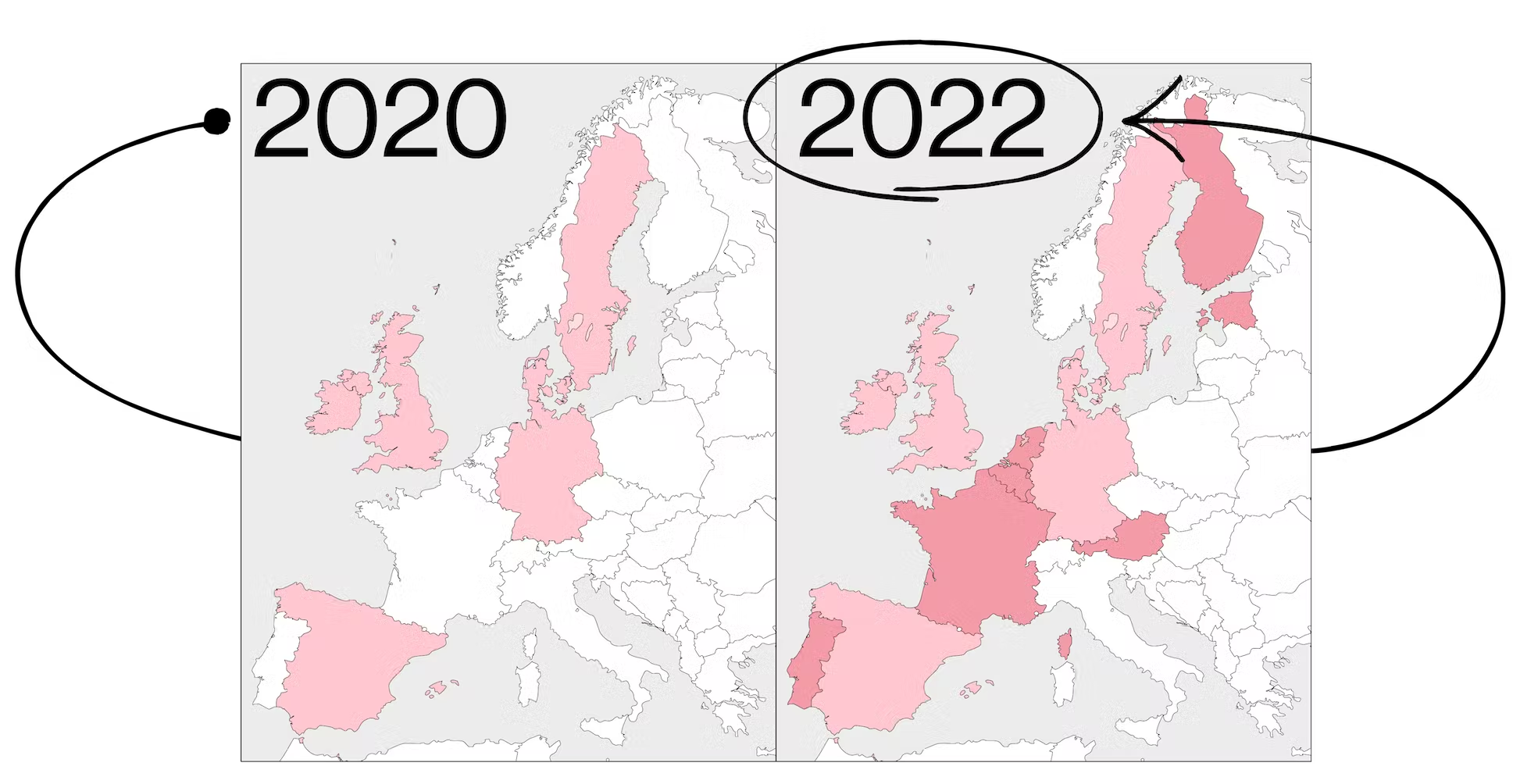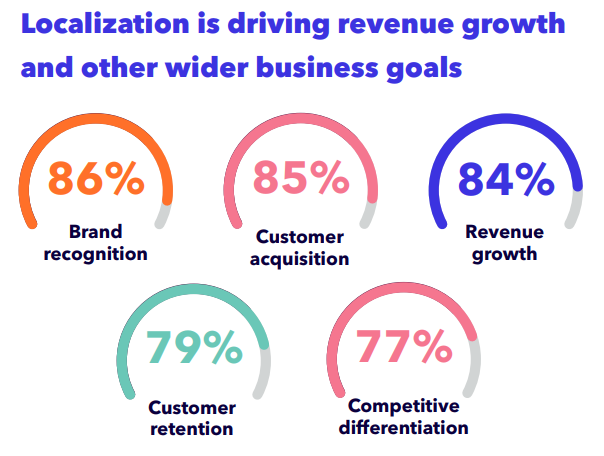-
How we help
- Does my software work?
- Does it work for all users?
- Global Growth Toolbox
- Industries
-
Platform
- Platform
- Integrations
- Browse all test types
- Add-on services
- Pricing
- Resources
Localization: A Crucial Step in GTM Strategy
Having a localization GTM strategy in place is key to succeeding in new markets. Learn about what it involves, and the best way to implement it.

Building a Localization GTM Strategy
In order to have a successful product launch, you need a go-to-market (GTM) strategy. GTM strategies contain all of the information you need to know, such as your target audience, sales strategies, and local competition. And, if you're looking to expand internationally, they also outline your localization strategy.
A localization GTM strategy helps you connect with new international markets. Breaking into new markets is challenging, but by localizing your product launch to reflect individual languages and cultures, you'll increase your chances of success.
Do I need localization to go to market in a new country?
The short answer is yes. When launching a product or brand in a new country, you need to ensure it’s well-suited to the target market. However, the amount of work you need to do can vary greatly.
For some markets, this may be a case of translating key landing pages. If you share a language, it could be as simple as just changing the available payment options. For others, you may need to implement a complete transcreation strategy - updating and adapting all your content to better suit unique cultural touchstones.
Whatever the scope of the project, localization is key to ensuring the best possible launch.
Differences for different businesses
To what extent you'll need to localize depends on business factors like target audience, competition, and culture.For instance, if you’re targeting a market that’s very different from your existing ones, the best course of action might be to rebuild your GTM strategy from scratch.
Alternatively, if you’re targeting a market that’s quite similar, you may only need to translate your content and make minor alterations to your sales strategy.
Sometimes it can be even easier than that - for instance, if you’re a US company targeting the UK market, you might only need to find a local banking partner and start accepting orders
Pros of localizing upon release
By localizing your product release, you’ll eliminate barriers to a successful launch. These barriers include:
- Hard barriers (such as legal, consumption, and language)
- Soft barriers (such as sentiment, branding, and some use cases)
By ensuring you comply with local regulations, licenses, and legal requirements, you can ensure you hit the ground running and can be taking orders from day one. Plus, by speaking the local language, you’ll have a much broader reach and a greater chance of bringing in the customers you want.
Going beyond this and addressing soft barriers is a sign of truly a great localization GTM strategy. This goes beyond language, adapting your brand’s identity and messaging to local sentiment and likely use cases.
If you want to have a successful hard launch, it's best to serve users with the best possible version of your product, and that means localizing it.
Cons of localizing upon release
While it's best to localize your GTM strategy, you may need to overcome specific localization challenges. These include:
- It’s expensive and time-consuming. As we’ve mentioned, localization involves far more than translation. It also involves market research, international SEO, and more, which eat into your timeframe and budget.
- It’s a nightmare to manage. It can be challenging to manage all the different aspects of your localization strategy, especially if you lack in-depth knowledge of your target market.
- It slows everything down. Adding in the extra steps required to localize can make everything slower. In particular, if you have to make changes to accommodate a new alphabet or change your UX, you may cause delays.
- It may require hiring someone. If your target market is very different from your original market, you may need to hire a local subject matter expert. They can help you determine what to localize, but hiring them adds to your expenses.
Localize less; building a localization MVP
One way to reduce the expenses and time frame associated with localization is to create a localization MVP (minimum viable product). That way, you can test the waters by focusing on a few key pieces of content and measuring the results. If the market reaction is positive, you can invest in a full localization一confident your investment won’t go to waste.To build your localization MVP, ask yourself questions like:
- What are your goals for the new market?
- What do you need to localize to give users a good enough experience to decide to buy your product?
- What content do you need to localize to generate enough traffic and publicity?
- What legal material do you need to localize to ensure you meet local requirements?
What constitutes a localization MVP?
A localization MVP involves identifying the key pieces of content to localize. You need to research the content your target audience is most interested in and assess your existing content’s popularity.If your target audience prefers blog posts, localize your popular blog posts first. If they prefer solutions, concentrate on your FAQ pages, how-to guides, and manuals. For instance, Diana Georgieva, Senior Localization Manager at Pleo, says:
By creating a localization MVP, Pleo was able to conquer 10 new markets in only 10 months! Check out our article on how they did it at Pleo to learn more.

What is a localization MVP team?
Your localization MVP team is a group of people who'll carry out your localization GTM strategy. There are several options to choose from, each with pros and cons:- Asking someone to translate in-house. In-house translators have detailed knowledge of your company and product. But they may only have expertise in a few languages and lack localization experience.
- Using machine translation software. This is a cost-effective option that’s much faster than manual translation. It's great for simple text like product descriptions but can struggle to accurately translate complex text. If you use this option, be sure to review the results.
- Hiring a localization professional or team. These professionals have hands-on localization experience and expertise. This is a more expensive option, though, and you’ll have to train them in your brand voice and terminology.
- Using an LSP or external party. This is the best option for multiple languages and specialized content. LSPs draw on a large pool of translators and localization experts, so have a short turnaround. The downside is the cost and the lack of intimate brand knowledge.
Avoiding embarrassing mistakes
To avoid mistakes, you need to use localization testing and quality assurance before going to market. QA ensures your product works as expected and your localized content is up to scratch.
The tests you’ll need to run vary depending on your product and target market. But, at the very least, you need to ensure your product works in terms of:
- Placeholders, strings, and concatenations
- Compatibility with local hardware and software
- Load times and responsiveness
- Cultural appropriateness of colors and images
- UX and the customer journey
- Currency and pricing structure
- Date and time formats
- Linguistic correctness, fluency, and context
- Compliance with local regulations
Automated testing can significantly speed up the testing process, freeing up time and resources for other tasks.
Building a product plan: how do I grow my localized product or service?
To launch and promote your localized product or service, you need to build a product plan. A product plan for a localization GTM strategy has three main stages: Analysis, Decision, and Execution.
At the ‘Analysis’ stage, your aim is to gather all the information you need to localize. That means you need to:
- Define your goals and objectives
- Research your target market and audience
- Analyze your competitors
- Examine your resources (like budget and team) to establish a timeline
At the ‘Decision’ stage, use the information you gathered to decide the best course of action. Specifically, you need to decide which markets to target and what resources to use (including what will be done internally, and what will be outsourced). You also need to define your KPIs and determine how to monitor and update your strategy.
Finally, the ‘Execution’ stage is when you establish a clear roadmap and assign roles and responsibilities. Then, you’re ready to take your localized product to market.
Beyond go-to-market
Once you’ve launched your localization MVP, you need to measure the results based on the KPIs you’ve set. Common KPIs are sales, email signups, website traffic, and social media engagement.
It can be beneficial to break down your KPIs into quarterly or monthly targets. For example, you could set a target of increasing sales by 5% each month and then measure the results.
You should also conduct localization testing to see how well your product is working in the new market. You can then fix any issues and tweak your strategy before the main launch.
What is a go-to-market strategy?
To recap, you use a go-to-market strategy to launch and promote a new product, service, or feature.
Every go-to-market plan is different, but they all involve identifying your target audience's pain points and how your product can solve them. They also detail how you'll market your new offering in the competitive landscape.
When is a GTM strategy needed?
You need a go-to-market strategy every time you launch a new product or service in a new (or existing) market.
Having a GTM strategy ensures you’re targeting the right audience on the right channels in the most effective way. It also ensures your potential customers understand the value of your product or service in solving their pain points.
While a GTM strategy doesn’t guarantee a product’s adoption, it reduces risk and gives you the best chance of success.
The benefits of product localization
By localizing your GTM strategy, you’ll answer key questions about your target market, such as:
- Who are they?
- What are their pain points?
- How can you best reach them?
Answering these questions will help you better target local audiences.
If you localize from the beginning, you can get your product to market faster. You won’t have to make last-minute changes, and each new market will need less work as you’ll have a localization framework in place.
Plus, by localizing, you can attract customers who don’t speak English. You’ll also retain customers for longer, as they’ll feel more connected to you than if you simply run your content through a translator. This will in turn boost your revenue.

What to include in your GTM strategy template
You need to create a go-to-market strategy framework based on your business goals and target market. Often, this framework is in the form of a template you can use for each new market.Your GTM strategy template should contain everything you need to know about your target audience, sales strategies, and launch plan. Key sections to include are:
- Goals and objectives
- Product-market fit
- Target market (new or existing) and its growth potential
- Competitive landscape
- Target audience/buyer persona
- Value Matrix
- Customer journey
- Differentiated offerings
- Distribution channels
- Marketing/sales strategies (inbound and outbound)
- Pricing model
- Key metrics
- Launch plan (timeline and key steps)
Enhance your GTM strategy with localization
What is a GTM strategy if not a method of success in a new market? Adding in localization ensures you connect with audiences in a way they can relate to, boosting customer acquisition and retention.
Global App Testing can help localize your GTM strategy, and ensure you enjoy a successful product launch - why not reach out to us today?
